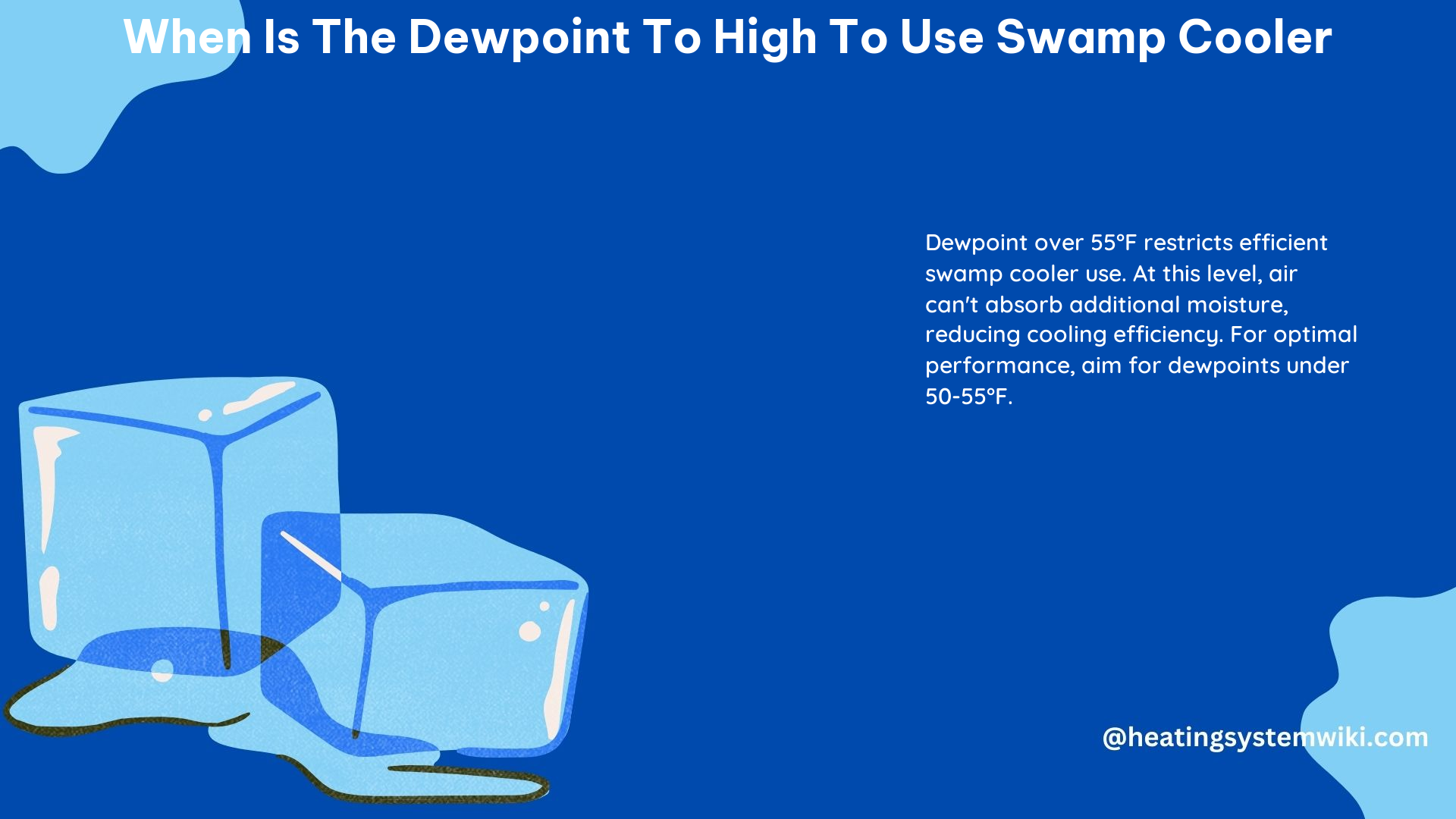The dewpoint is a crucial factor in determining the effectiveness of a swamp cooler. Swamp coolers work by evaporating water into the air, which cools the air as the water absorbs heat from the surrounding environment. However, if the dewpoint is too high, the air is already saturated with moisture, and there is not enough excess heat for the water to evaporate effectively.
Understanding Dewpoint and Its Importance for Swamp Coolers
Dewpoint is the temperature at which air becomes saturated with water vapor. It is a more accurate and consistent measure of humidity than relative humidity, as it does not change with temperature. When the dewpoint is high, the air is already close to its saturation point, and there is less capacity for the water in the swamp cooler to evaporate and cool the air.
The optimal dewpoint range for effective swamp cooler operation is generally considered to be below 55°F (12.8°C). When the dewpoint exceeds this threshold, the swamp cooler’s ability to cool the air is significantly reduced.
Factors Affecting Swamp Cooler Efficiency

Several factors can influence the effectiveness of a swamp cooler, including:
-
Outdoor Temperature: The higher the outdoor temperature, the greater the potential for the swamp cooler to cool the air. However, if the dewpoint is too high, the cooling effect will be diminished.
-
Relative Humidity: While dewpoint is a more accurate measure, relative humidity can also provide insight into the air’s moisture content. Typically, a relative humidity above 60% is considered too high for effective swamp cooler operation.
-
Air Flow: Proper air flow is essential for swamp coolers to function effectively. Ensure that the unit is properly sized for the space and that the air intake and exhaust are unobstructed.
-
Water Quality: The quality of the water used in the swamp cooler can impact its efficiency. Mineral-rich or hard water can lead to buildup and reduced evaporation rates.
Determining the Optimal Dewpoint for Swamp Cooler Use
To determine the optimal dewpoint for swamp cooler operation, you can consult a swamp cooler humidity chart or calculator. These tools take into account both the dewpoint and the outdoor temperature to provide a more accurate estimate of the cooling potential of the swamp cooler.
Here’s an example of a swamp cooler humidity chart:
| Outdoor Temperature (°F) | Dewpoint (°F) | Cooling Potential |
|---|---|---|
| 90 | 50 | Excellent |
| 90 | 55 | Good |
| 90 | 60 | Poor |
| 95 | 50 | Good |
| 95 | 55 | Fair |
| 95 | 60 | Poor |
| 100 | 50 | Fair |
| 100 | 55 | Poor |
| 100 | 60 | Very Poor |
As you can see, the cooling potential of the swamp cooler decreases significantly as the dewpoint rises above 55°F (12.8°C).
DIY Tips for Effective Swamp Cooler Operation
To ensure your swamp cooler operates at its best, consider the following DIY tips:
-
Check the Weather Forecast: Before using your swamp cooler, check the local weather forecast for the dewpoint and outdoor temperature. This will help you determine if the conditions are suitable for effective operation.
-
Consult a Swamp Cooler Humidity Chart: Use a swamp cooler humidity chart or calculator to determine the optimal dewpoint for your specific outdoor conditions.
-
Maintain the Swamp Cooler: Regularly clean and maintain your swamp cooler to ensure it is functioning efficiently. This includes replacing the water, cleaning the pads, and checking for any blockages or damage.
-
Adjust the Air Flow: Ensure that the air intake and exhaust of your swamp cooler are unobstructed and that the unit is properly sized for the space.
-
Use High-Quality Water: Consider using distilled or filtered water in your swamp cooler to minimize mineral buildup and maintain optimal evaporation rates.
By understanding the relationship between dewpoint and swamp cooler efficiency, you can make informed decisions about when to use your swamp cooler and how to optimize its performance for maximum cooling comfort.
